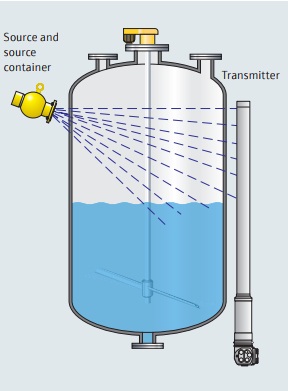Nuclear Level Measurement

Introduction
Continuous nuclear level measurement is typically used where most other technologies are unsuccessful. Different radioactive isotopes are used, based on the penetrating power needed to pass through the tank. Radiation from the source is detected on the other side of the tank. Its strength indicates the level of the fluid.
Theory
Nuclear continuous level measurement works by directing a narrow fan of radiation through the vessel to a detector. As the process level rises, it shields the detector from the from the radiation. The more radiation the detector sees, the lower the process level . The less radiation detected, the higher the process level



Advantages
Disadvantages
Costly to install
Requires licensing by regulatory agency
Dangerous to handle unless precautions are followed
Original calibration and checkout often difficult and costly
Errors caused by density variations in measured materials
Lack of application data
Difficult to obtain linear readout over wide ranges





